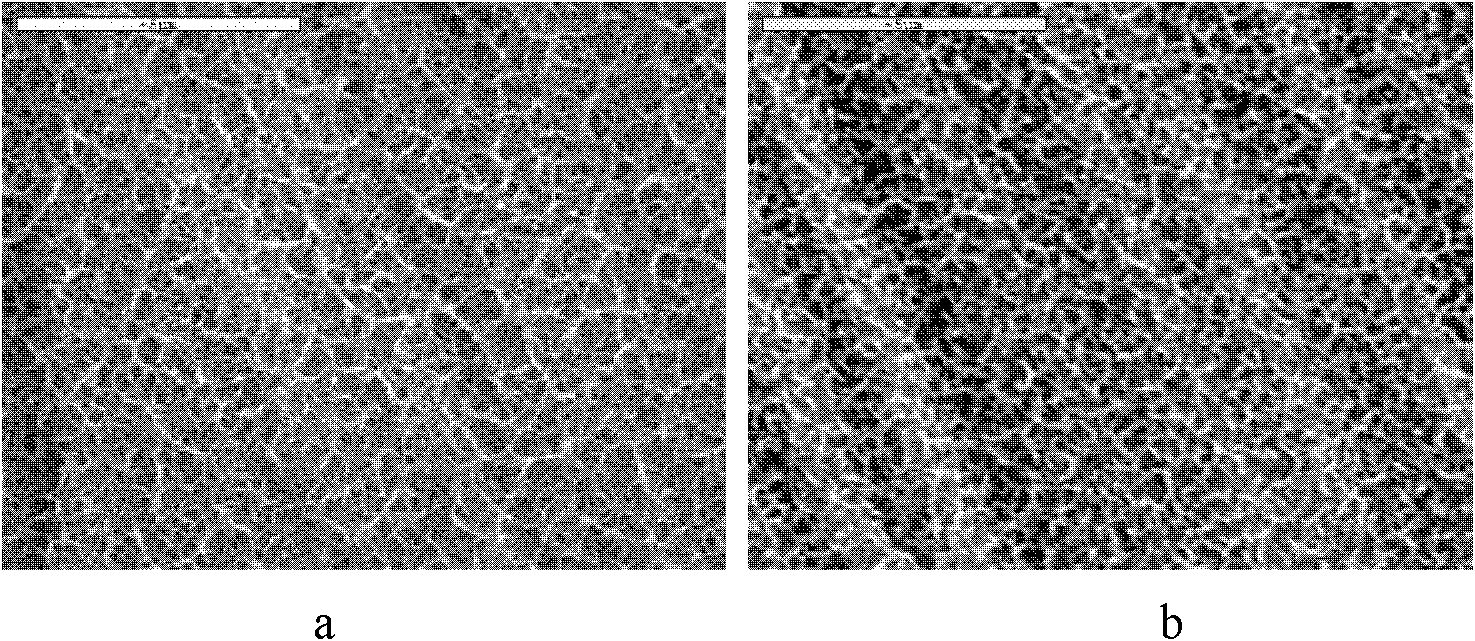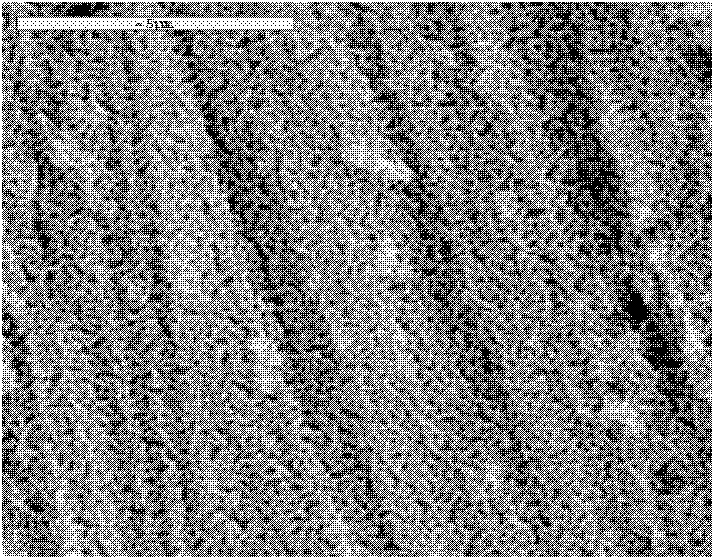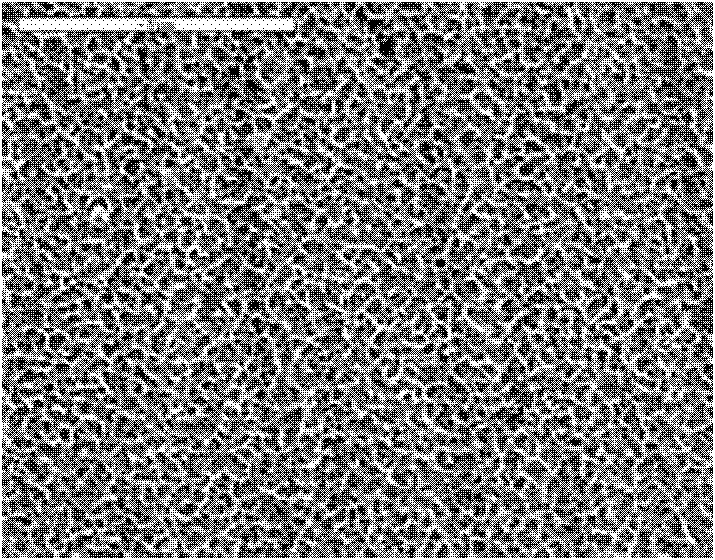Method for improving surface hydrophilicity of medical titanium or titanium alloy
A titanium alloy and hydrophilic technology, applied in the coating process of metal materials, etc., can solve the problems of superhydrophilic attenuation, harsh preparation conditions, unfavorable industrial applications, etc., achieve reliable performance, stable process, and improve surface hydrophilicity sexual effect
- Summary
- Abstract
- Description
- Claims
- Application Information
AI Technical Summary
Problems solved by technology
Method used
Image
Examples
Embodiment 1
[0017] Put 10×10×1.2mm 3 The pure titanium sheet was polished step by step with sandpaper to No. 1500, polished, ultrasonically cleaned with acetone, ethanol and deionized water for 5 minutes, and then dried. Prepare a 1.0M NaOH solution, and treat the pure titanium sample under airtight and 60°C water bath conditions for 24 hours, forming a nanoporous network sodium titanate hydrogel layer on the surface. After the reaction, the sample was taken out and washed with deionized water more than 3 times. Put the sample treated with lye into 0.1M dilute hydrochloric acid solution, let it stand at room temperature for 12 hours, take out the sample, wash and dry it. The surface of the sample is nanoporous network morphology, the scanning electron microscope picture is as follows figure 1 a, Its composition is titanium dioxide hydrogel. The contact angle of the sample to deionized water measured by a JY-82 contact angle measuring instrument is 10°, which is far lower than the conta...
Embodiment 1-1
[0019] Heat the sample treated with dilute hydrochloric acid in a resistance furnace at a temperature of 600°C for 0.5 hours. The surface of the sample still maintains a nanoporous morphology, as shown in the scanning electron microscope figure 1 b. The contact angle of the sample surface to deionized water is 3°, showing superhydrophilicity. After the sample is stored in the air, the contact angle will increase, and it can rise to more than 120° after 2 weeks.
Embodiment 1-2
[0021] The sample treated with dilute hydrochloric acid is directly irradiated with ultraviolet rays for 3 hours. The central wavelength of ultraviolet light is 253nm, and the contact angle can be reduced to below 5°.
PUM
 Login to View More
Login to View More Abstract
Description
Claims
Application Information
 Login to View More
Login to View More - R&D
- Intellectual Property
- Life Sciences
- Materials
- Tech Scout
- Unparalleled Data Quality
- Higher Quality Content
- 60% Fewer Hallucinations
Browse by: Latest US Patents, China's latest patents, Technical Efficacy Thesaurus, Application Domain, Technology Topic, Popular Technical Reports.
© 2025 PatSnap. All rights reserved.Legal|Privacy policy|Modern Slavery Act Transparency Statement|Sitemap|About US| Contact US: help@patsnap.com



